The Three Threats to Radio’s Role in New Music Discovery
October 19, 2017
![]() By Matt Bailey
By Matt Bailey
This post is the third in a series exploring how changing technology impacts radio listening, music consumption, and radio’s role at introducing listeners to new music.
Our last post showed how people who own smart speakers, such as the Amazon Echo and Google Home, are indeed more likely to stream local FM stations, but are also more likely to use on-demand streaming services such as Spotify, Amazon Music, Google Play and Apple music. Overall, they are higher consumers of music in general.
What impact do new devices such as smart speakers and new ways of listening to music like Spotify have on radio’s long-standing role of introducing the latest new music to listeners? Do smart speaker owners now turn to Alexa to find out what’s new instead of their local CHR personality?
We talked with 3,140 15- to 39-year-olds who are partisans to a local CHR, Rhythmic CHR, Urban, Alternative, or Country station to find out.
What we uncovered is both encouraging and sobering for radio broadcasters.
The good news is that local FM radio stations remain the leading source for 15- to 39-year-old listeners to learn about new music. Unfortunately, radio no longer wins that by a landslide as other music listening options are catching up.
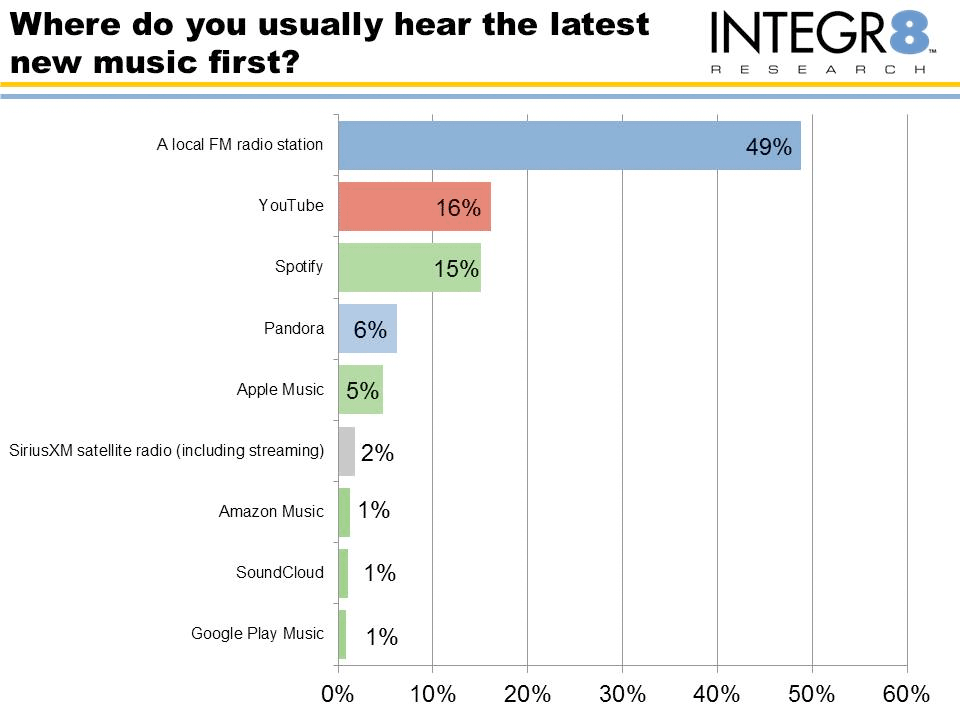
There are three factors that most threaten radio’s role in new music discovery:
1) Being young: For listeners over 30, radio remains the dominant way the majority of listeners learn about new music. Among teens, however, only 34% typically hear the latest new music first from a local FM radio station, while almost as many hear new music first from an on-demand audio service or YouTube.

2) Subscribing to an on-demand service: When listeners regularly use Spotify or one of its clones, the on-demand service takes on a much bigger role in new music discovery. Only 41% of weekly on-demand audio users hear new music first on FM radio, while 34% hear new music first on an on-demand audio service.
On-demand services have had a more significant negative impact on FM radio’s role in new music discovery than all the other new ways of consuming music that came before it—including Pandora, Sirius/XM, internet radio*, and even YouTube.
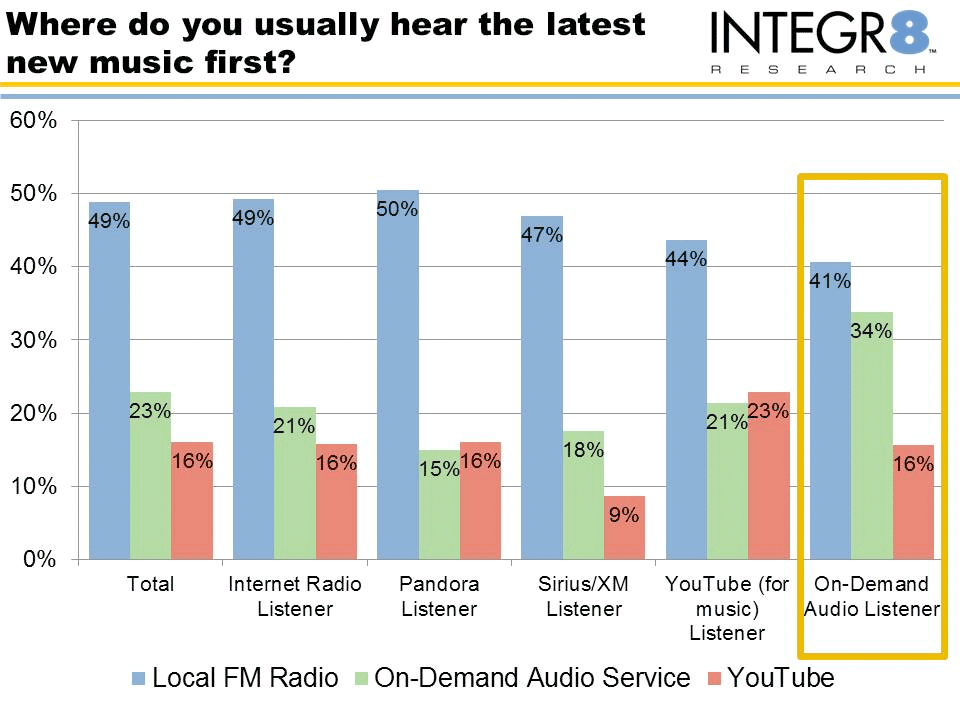
3) Owning a connected car: When listeners acquire a car with Apple CarPlay or Android Auto, their music consumption behavior and FM radio’s role in new music discovery both change dramatically.
Like all listeners, connected car owners are most likely to spend time with a local FM station. However, they are also far more likely to be weekly users of a wide variety of alternatives to traditional radio, from Pandora, Sirius/XM, and online-only internet radio, to Amazon Music and Soundcloud. By far, however, the biggest increase goes to Apple Music. 42% use Apple Music weekly, compared to only 18% of all 15- to 39-year-olds.
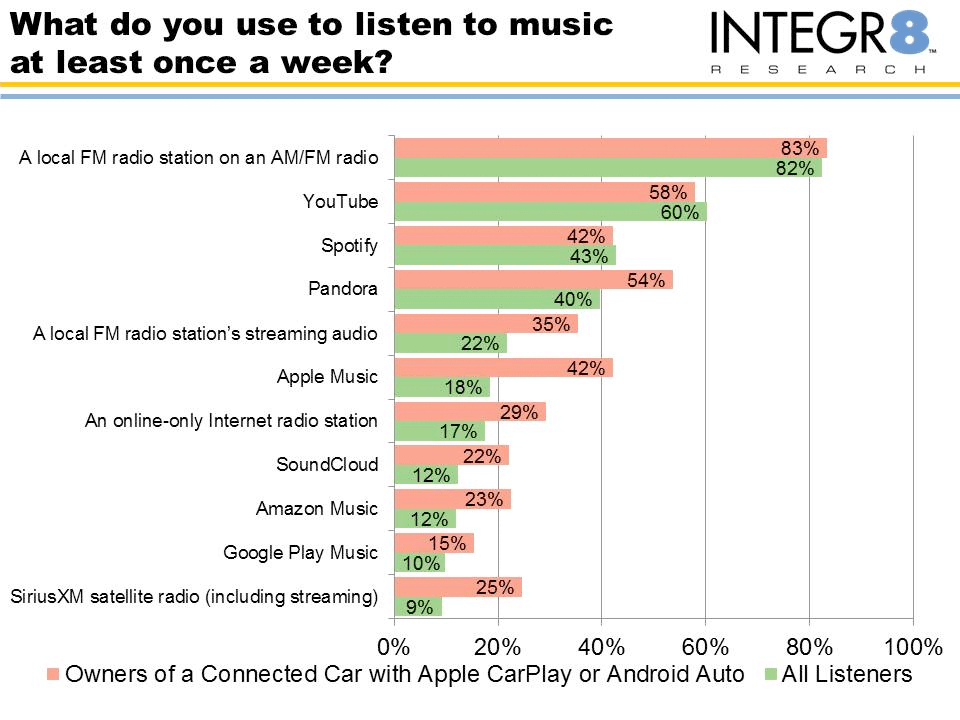
With connected car owners using so many alternatives to FM radio, their perception of radio’s role in new music discovery also changes significantly. Only 43% of connected car owners say they hear the latest new music first on FM radio, while 33% hear new music first on an on-demand audio service. That shift is bigger than for any other device examined.
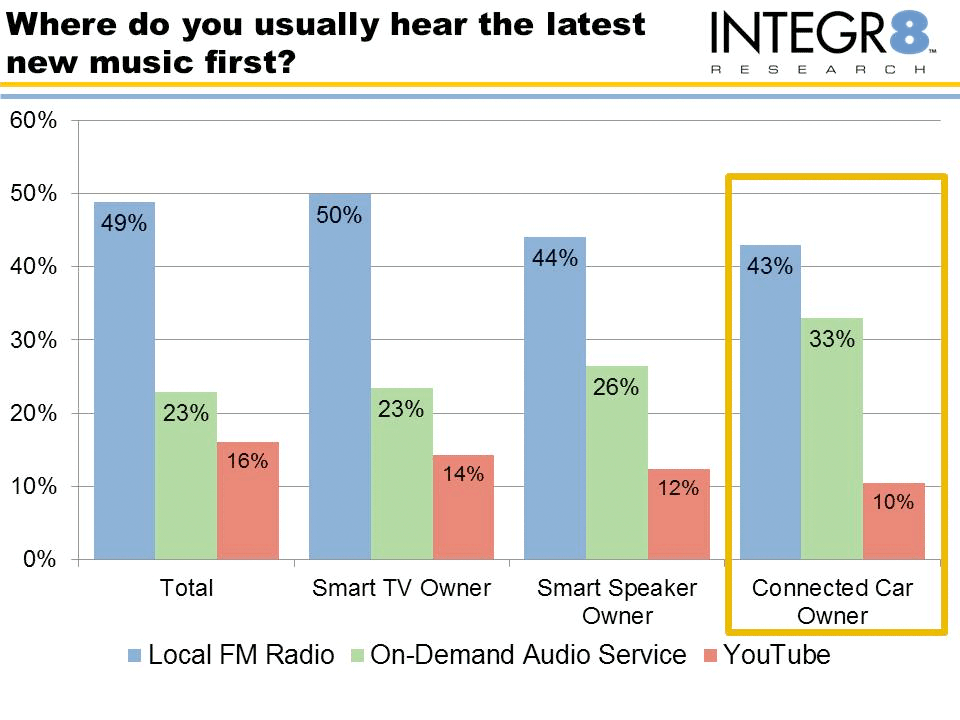
Today, only 8% of 15- to 39-year-olds own a car with Apple CarPlay and Android Auto, but automotive experts predict that by 2020, three-fourths of all cars sold worldwide will be connected cars.
If new owners of connected cars behave similarly to current owners, radio’s role in our biggest listening environment—the automobile—could be seriously endangered.
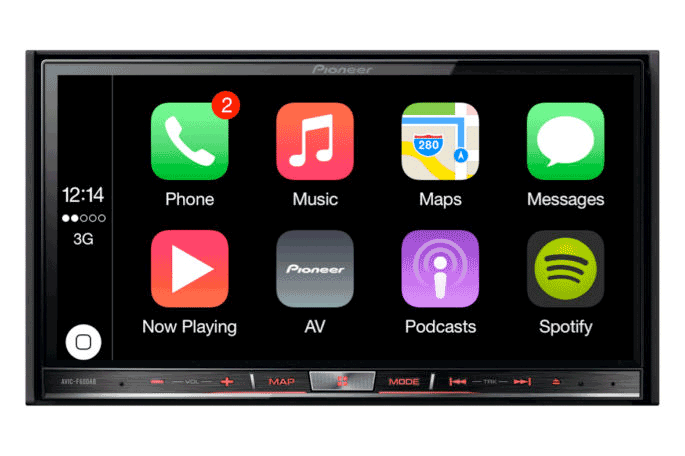
Should you be pessimistic in light of these trends? No. Radio is the sole proprietor of a secret weapon it can deploy to remain the new music discovery king.






























